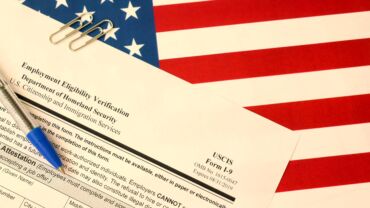A blog of some of the prior week’s more important federal, state and local payroll stories. This week’s focus is on the federal employment taxes. Form 941 just got its latest makeover for the continued COVID-19 tax credits. We’ll go over what you need to know.
Federal Employment Taxes
The United States first imposed a federal income tax briefly during the American Civil War and also in the 1890s. However, it was the 16th Amendment to the U.S. Constitution in 1913 that permanently legalized a federal income tax. Then, in 1935, the Social Security Act was signed into law, which resulted in a tax on both the employer and employee (6.2% each). Next, in 1939, the Federal Unemployment Tax Act (FUTA) was passed, which resulted in an employer tax (typically, 0.6% if the employer qualifies for the full FUTA tax credit) on a certain amount of employee wages each year. In 1965, Medicare was signed into law, which resulted in a tax on both the employer and employee (1.45% each). And in 2013, the Additional Medicare tax (0.9%) on wages in excess of $200,000 took effect.
In general, the federal income tax, Social Security tax, FUTA tax, Medicare tax, and Additional Medicare tax are considered employment or payroll taxes. An employer withholds these taxes from the wages of each employee and file and pay the taxes with the IRS. There are several IRS forms used to report these taxes. For example, Form 941, Employer’s Quarterly Federal Tax Return, is used by most employers (agricultural employers use Form 943, small employers use annual Form 944 and Form 945 for annually reporting nonpayroll payments) each quarter to report employment taxes. Employers use Form 940, Employer’s Annual Federal Unemployment (FUTA) tax return, to report FUTA tax.
Form 941 is typically updated annually by the IRS. However, that changed when the COVID-19 pandemic started. In January 2020, the IRS already issued the 2020 version of Form 941. Then, the Families First Coronavirus Relief Act (FFCRA) and Coronavirus Aid, Relief and Economic Security (CARES) Act were signed into law. These two federal laws contained payroll-related provisions aimed at helping employers and employees during the pandemic. Notable provisions included: paid sick and family medical leave, the employee retention credit and deferral of the employer portion of Social Security taxes. To help employers track and report these credits and the deferral, the IRS needed to revise Form 941.
Form 941 was updated a few more times to account for the COVID-19 credit amendments and expansions. The current version of Form 941 was issued on June 24, 2021. It includes the COVID-19 amendments and expansions from the American Rescue Plan Act (ARPA), which was signed into law on March 11, 2021. The June 2021 Form 941 also adds the COBRA premium subsidy credit, which was a provision of ARPA.
Since the paid sick and family medical leave credit is available on wages through September 30, 2021 and the employee retention credit is available through the end of 2021, understanding the most recent version of Form 941 and its instructions is a good idea. The Form 941 instructions now has five worksheets to help employers determine the COVID-19 and other credits. They are as follows:
- Worksheet 1. Credit for Qualified Sick and Family Leave Wages for Leave Taken Before April 1, 2021.
- Worksheet 2. Employee Retention Credit for the Second Quarter of 2021 Only (Wages Paid After March 31, 2021, and Before July 1, 2021).
- Worksheet 3. Credit for Qualified Sick and Family Leave Wages for Leave Taken After March 31, 2021.
- Worksheet 4. Employee Retention Credit for Third and Fourth Quarters of 2021 Only (Qualified Wages Paid After June 30, 2021).
- Worksheet 5. COBRA Premium Assistance Credit.
Now let’s go over some of the more important payroll news stories from last week.
Federal News
Legislation being considered by Congress. There are a number of pieces of legislation being considered by the 117th Congress that are payroll-related. For example, the “Paying a Fair Share Act of 2021” would impose an additional tax rate of 30% on individual income more than $1 million. Another Senate Bill being considered would completely replace the federal income tax tables for withholding purposes with a 17% flat income tax rate, applying to wages, retirement distributions and unemployment compensation that exceeds the standard deduction. And a House Bill being considered would allow the treatment of student loan payments as elective deferrals for purposes of employer matching contributions.
Supreme Court denies remote taxation case. The U.S. Supreme Court has declined to hear a case filed by New Hampshire regarding its neighboring state of Massachusetts’ policy of continuing to withhold income tax on employees working remotely due to the COVID-19 pandemic. The highest court in the land rejected the case because Massachusetts’ policy was temporary in nature and not within its “original jurisdiction,” arguing that a lower court should hear the case at the state level.
IRS provides common errors when filing Form 7200. The IRS has provided information to taxpayers regarding common errors to avoid when completing Form 7200, Advance Payment of Employer Credits Due to COVID-19. Form 7200 was created by the IRS after federal legislation was enacted that allows employers to claim COVID-19 pandemic tax credits. The form can only be submitted by fax.
IRS extends guidance on leave-sharing programs. The IRS has extended earlier guidance through 2021 for employer leave-sharing programs that aid victims of the coronavirus (COVID-19). This means that the cash payments employers make under a leave-sharing program, before January 1, 2022, to tax-exempt charitable organizations providing relief to victims of the COVID-19 pandemic, will not be treated as wages or compensation to the employees for federal tax purposes
Backup withholding publication updated to reflect Form 1099-NEC. The most recent revision of IRS Publication 1281, Backup Withholding for Missing and Incorrect Name/TINs, has been updated to reflect the use of Form 1099-NEC, Nonemployee Compensation for the reporting of commissions, fees, or other payments for work performed as an independent contractor. Prior to the 2020 tax year, this information was reported on box 7 of Form 1099-MISC.
State and Local News
Worker classification legislation. Alabama has enacted legislation that requires employers to use specific guidelines that include the IRS’s common law test (Revenue Ruling 87-41) to determine whether a worker is engaged in employment for the purposes of withholding tax and unemployment law [Alabama House Bill 408].
Payroll tax relief. The California Employment Development Department (EDD) has announced that employers in Madera and Mariposa Counties directly affected by the extreme winds may request up to a 60-day extension of time from the EDD to file their state payroll reports and/or deposit payroll taxes without penalty or interest. A written request for an extension must be received within 60 days from the original delinquent date of the payment or return.
Jumpstart program offering money to returning unemployed workers. The Colorado Jumpstart incentive program provides a return to work incentive of up to $1,600 to unemployment recipients returning to work has been extended by 30 days. The program was to end June 26, 2021. Funds for the program will remain available until September 4, 2021.
Wage and tax statement filing due date changed. Hawaii has changed the due date for employers to file the wage and tax statement with the Department of Taxation from the last day of February to January 31. The bill also provides a penalty with regard to the wage and tax statement: an employer that willfully fails to furnish the statement to the employee by the prescribed due date, fails to file the statement with the department by the prescribed due date or fails to electronically file the statement with the department if required to file electronically will be subject to a penalty of $25 per failure. The penalty cannot exceed $50 per employee.
Information return failure to file penalties. Maine has established a failure to file penalty for responsible persons who fail to provide information returns including Forms W-2 and 1099 to the Maine state tax assessor. Maine law is amended to include a $50 penalty for each assessed failure beginning with returns required to be filed on or after January 31, 2022.
Telework tax relief extended. Maine has enacted legislation that extends the credit for resident employees working remotely during 2021. For the period of 2021 only, Maine residents who were formerly working from a location outside of the state prior to the declaration of emergency in 2019 due to the coronavirus (COVID-19) pandemic may claim a credit for taxes withheld and paid to another jurisdiction against their Maine income tax withholding liability.
Budget bill contains provision reducing income tax rates. Ohio’s fiscal year 2022-23 budget bill provides that for tax years beginning in 2021, the number of tax brackets that impose tax on individuals’ nonbusiness income is reduced from five to four.
To see how your firm can get the most trusted tax and accounting answers, start your free trial of Thomson Reuters Checkpoint Edge or contact sales to get started on transforming the way your firm does research.










